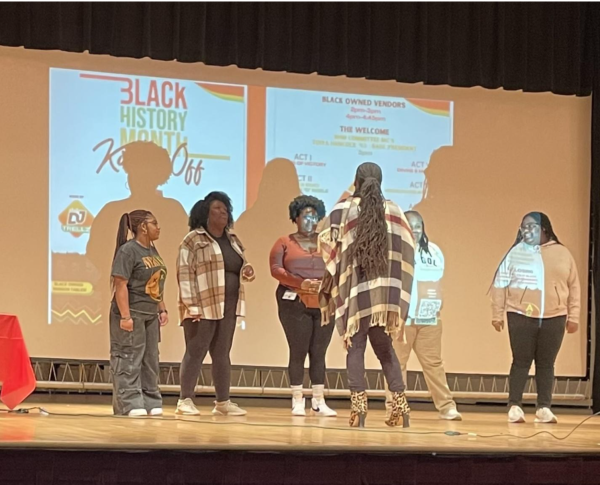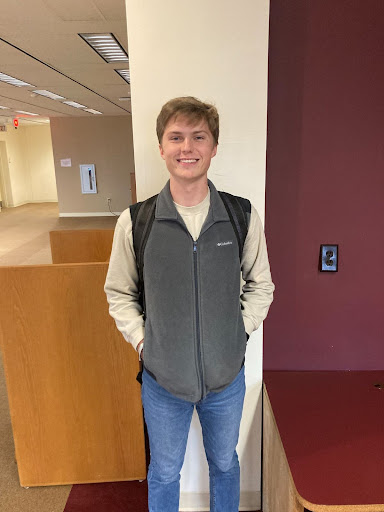The spike that backtracked Guilford to Phase 2
On Wednesday, Sept. 30, Interim President Jim Hood announced that Guilford College was to move back into Phase Two protocols following an uptick in COVID-19 positivity rates after a testing clinic the day before.
Out of 244 tests conducted during the testing clinic on Sept. 29, 26 were positive. The Health & Safety Task Force reports that 16 of these individuals were vaccinated, while one is currently in the vaccination process. This 10.65 percent positivity rate is significant in comparison to the previous weeks’ reports. The week before Sept. 29 showed zero positive COVID-19 tests, and the week before that had just four cases out of 975 tests.
Though Guilford was initially set to begin the school year in Phase Five of the Activity Matrix—minimal restrictions and a practical return to normal—President Hood decided in early August to maintain Phase Four instead after a surge in COVID cases in the surrounding Guilford and North Carolina areas. The College had been in Phase 4, which allowed in-person classes and other regular events with increased safety precautions, until Sept. 30.
Until Wednesday, Oct. 6, indoor classrooms were closed for use and outdoor spaces could be used but were limited, so class instruction was primarily online.
“…On-campus events will (also) be transitioned online, cancelled, or greatly curtailed,” President Hood said in his statement.
Though they understand the choice made by the College, many students are not happy with the current situation, especially those whose majors and student life activities are centered around an in-person environment.
“…Theatre will never work online, so when things like this happen, everything grinds to a complete half,” said senior theatre studies major Gretchen Waldorf.
“We were so close to finally being able to get approval for in-person meetings and we were planning our annual trip to the Renaissance Fair, and we had to cancel all of that,” said Kaya Simpson, a senior experience design major and member of the yachting club. “Zoom club meetings really do kill numbers.”
In addition, an official COVID-19 cluster was identified in association with the athletics department. 18 of the 26 positive cases were from members of the athletic community at Guilford. The specific source of the cluster was not named.
“It is really disheartening that those of us who are following the rules then get stuff taken away from us, while the student athletes and teams who seem to be causing the outbreaks face no consequences and get to keep playing their sport,” said senior theatre studies major Naomi Caplan.
“It definitely feels like a punishment to those of us that have been doing our best, that have been vaccinated and wearing our masks and trying not to have something like this happen,” said Simpson.
An unofficial community ice cream social took place the very day of President Hood’s announcement about transitioning to Phase Two. This gathering, where free Ben & Jerry’s ice cream and other treats were provided, recognized “superb” COVID testing results in recent weeks.
“We’re doing so well with classes and club activities and athletic practices and meetings!” Hood wrote in his email invitation. “Let’s celebrate with a sweet treat and keep it that way!”
The Phase 2 transition was set to last through Wednesday, Oct. 6, after data on the most recent COVID testing could be processed. On Wednesday, President Hood announced, as hoped, that positivity rates were back to below 1 percent, and that the school could return to Phase 4. In their ongoing efforts to minimize the transmission of the virus, Guilford College has also approved an official vaccine mandate for all community members by Friday, Oct. 15, providing a tangible source of hope for many.
“I’m very excited,” Waldorf said.
Moving forward through this time, Hood, as well as the Health and Safety Task Force, encourage the community to be responsible and follow safety guidelines on face coverings, physical distancing and group gatherings. In an effort to encourage this, the Phase Two protocols included closure of the gym and all sit-in dining services. Senior sports management major Denis Widdicombe speculated upon whether this may be doing more harm than good.
“I think there has to be a balance between safety and having on-campus resources,” Widdicombe said. ‘If you close down all the amenities…people are going to go off-campus to get them. People who want to go to the gym will go to another one off-campus, or people who want to go to the dining hall will go to a restaurant.”
Though the campus is now back in Phase Four, history has shown how swiftly conditions can change, and the question of encouragement versus enforcement is still prevalent.
“The only way we are going to succeed in our efforts is if we meet this challenge together,” Hood wrote in his most recent email announcement.







